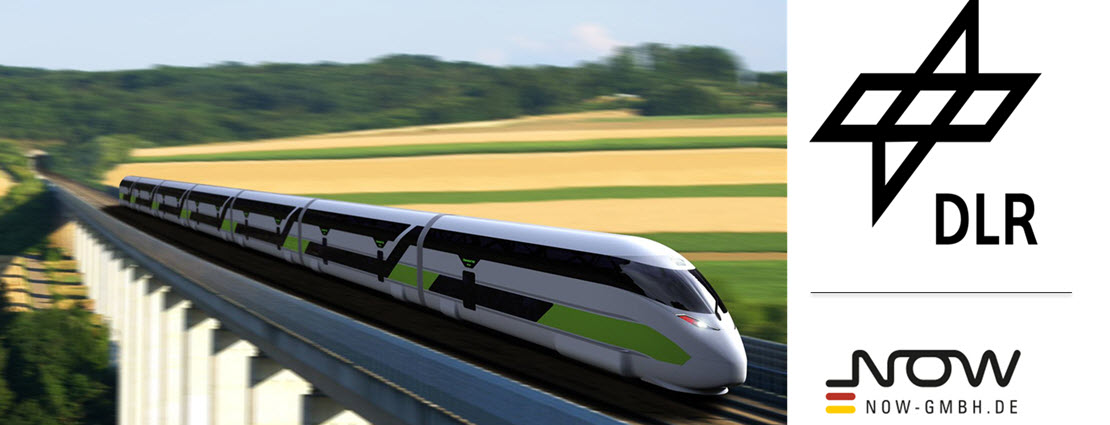
Climate-friendly hybrid multiple units have the potential to replace the majority of diesel vehicles on rail lines without overhead lines in the next 20 years. On behalf of the National Organization for Hydrogen and Fuel Cell Technology ( NOW), theInstitute for Vehicle Concepts of the German Aerospace Center (DLR) has conducted a study on 130 local rail passenger transport networks (SPNV) in Germany.
- DLR study: Multiple units with hybrid drives are a climate-friendly alternative to diesel vehicles on rail lines without overhead lines.
- DLR researchers analyze local rail networks and determine which alternative drive concepts are suitable for the respective lines.
- Investigation shows high market potential of hybrid railcars.
- Focus: transport, energy, climate protection, sector coupling
The DLR researchers are showing ways in which rail traffic can be made more environmentally friendly with innovative vehicle technologies in the future.
Catenary lines are the most efficient in regional rail transport, which is why important main connections are primarily electrified. Planning, approving and installing overhead contact lines can be time-consuming and costly. In most cases, track systems, platforms or bridges also have to be rebuilt and brought up to date in order to be able to install overhead contact lines. As a result, branch lines, in particular, are often not, or only partially, equipped with overhead lines. On such lines, hybrid multiple units represent a low-emission alternative to diesel vehicles: the electrically powered hybrid multiple units derive their electricity either from the overhead line or, independently of the contact wire, from batteries or fuel cells.
The DLR Next Generation Train NGT LINK train concept shows what tomorrow’s efficient hybrid multiple units can look like: The lightweight, double-decker feeder train is designed to connect smaller cities with metropolitan areas and, with its combination of overhead line operation and battery operation, can contribute to environmentally friendly rail transport.
Nationwide up to 2,500 hybrid multiple units
Diesel railcars are currently in use on more than 400 rail lines in German rail transport, most of them in the area of Baden-Württemberg, Bavaria and North Rhine-Westphalia. For these line networks, the DLR researchers determined how many rail vehicles could be used with alternative drives: “We see a nationwide market potential of up to 2,500 hybrid multiple units by 2038, depending on the future overhead line share of the route network,” says Johannes Pagenkopf, project manager of the study at DLR . Whether batteries or fuel cells are used does not only depend on line-specific features. In addition to route lengths, the electrified parts or the importance as a main or secondary connection, the costs for vehicles, their operation and the adaptation of the infrastructure also play a role.
A suitable type of drive often depends on the properties of the railway lines
The current range of battery-powered hybrid multiple units is up to 100 kilometers, but also depends on the operating conditions. “Depending on the schedule in the line network, the batteries can be recharged when traveling under existing and newly established overhead line sections or at charging stations during stays in end stations,” says Johannes Pagenkopf. Hybrid multiple units with battery buffers are therefore primarily suitable for lines that are easy to electrify at least in sections or that already have sections with overhead lines.
On lines with long sections without catenary and networks with only a few overhead lines, multiple units with fuel cell drives are the better choice. This applies in particular to rail connections in regions where hydrogen obtained from renewable energies is readily available.
The DLR researchers identify a further potential use of alternative train drives in line reactivation. This also applies to the development of innovative concepts for the expansion of charging infrastructures and hydrogen filling stations.
Download study [PDF] German Only
Read the most up to date Fuel Cell and Hydrogen Industry news at FuelCellsWorks




